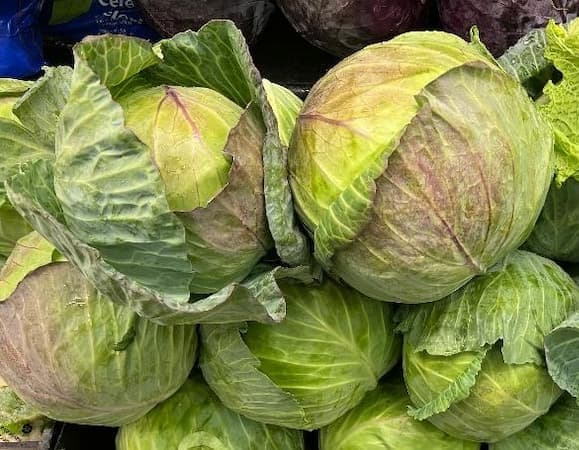How to Grow Cabbage Plants

How to Grow Cabbage Plants in Your Garden
This guide shows you how to grow cabbage plants in your home vegetable garden. You’ll find several cabbage varieties to choose from. It is a popular, cold-hardy cole vegetable crop. It grows best in cool weather, Spring and Fall. Flavor improves with frost or a light freeze. Farmers grow cabbage to harvest in cool, even cold fall weather. Cabbage was once thought to have supernatural powers. Tell that to the farmers who have to harvest it right around Halloween!
Most cabbage varieties form a tight head or ball. A few varieties, like Chinese Michihili cabbage, forms a loose, upright head, similar to the growth of Romaine lettuce. The majority of cabbages are white. A few red varieties taste equally sweet and are great for color and contrast in salads and recipes.
A member of the mustard family, cabbage has a strong, distinct flavor. Medical studies show that cabbage is good for your health. The studies suggest that they help to guard against cancer, especially colon and rectal cancers.
Did You Know? China produces almost half of the worldwide production of cabbage. And, they have been growing it for a long time. It is believed that Shensi Province, China, first grew cabbage around 4,000 B.C.
How to Grow Cabbage - Popular Cabbage Varieties
Early Jersey Wakefield – easy to grow, with very sweet, flavored, dark green heads. Early Jersey is a compact plant, weighing up to 3 pounds. 63 days to maturity.
Premium Flat Late Dutch – As it’s name suggests this is a premium cabbage. It grows approximately 12 inches in diameter, and averages a hefty 12 pounds. Requires 90-110 days to maturity.
Red Acre – Red-purple colored plants are space savers in your garden. It adds color to any cole recipe. Stores well. 75-80 days to maturity.
Chinese Michihili – This Chinese cabbage has a mild, delicate flavor. It has a cylindrical, leafy head, and is very popular in Asian cuisine. Use it a substitute in your favorite cabbage recipes. 75-80 days to maturity.
How to Grow Cabbage Plants
Grow Cabbage plants in full sun, in rich to average garden soil. Plants prefer cool weather. Cabbage will often split or bolt in hot weather.
Start Cabbage seeds indoors several weeks before planting. Seedlings can be transplanted outdoors early in the spring a couple of weeks before the last frost. For fall crops, plant outdoors in mid to late July. Seeds can also be directly sown into the garden.
If planted in wet weather, elevate the soil a little before planting.
Space seedlings 1 1/2 feet apart in rows 2 1/2 feet apart.
Water regularly to maintain moist, not wet soil.
Fertilize regularly with a general-purpose garden fertilizer.
Keep plants well weeded early in their growth.
Ideal Soil pH: 6.0 – 7.5
Also, see:
Soil Temperatures – Ideal germination temperature by vegetable
Ideal Soil pH – by vegetable
How to Grow Cabbage - Insects and Pests
Cabbage plants are very susceptible to insects. Among the most common are aphids, and cabbage loopers. Cabbage loopers are the larva stage of a moth. White moths that visit your garden and yard, are the culprits. Some people call them white butterflies. Effective organic treatment in the home garden is to place a screen over the plant so the female moth cannot lay her eggs. Commercial growers apply insecticides to control them. Aphids are controlled by frequent spraying. Organic controls in the form of soap or garlic sprays are also effective.
Plant Disease
Cabbage falls victim to rotting during hot and humid weather.
How to Grow Cabbage - Harvest Time
Days to Maturity: People ask: “How long does it take to grow cabbage?” Indeed, the answer varies widely by variety: 65-110 days.
Pick cabbage after the heads are full and solid. Squeeze the head to see if it has solidly formed.
Frost or a light freeze will improve flavor.
Cabbage can be eaten raw, steamed, or cooked.
Plant Hardiness
All cole crops prefer cool and even cold weather. They are among the first plants in your garden each spring. They survive below thirty degrees. So, in the fall, they will be your last crops to survive increasingly frequent frosts.
Cabbage Recipes
How to Grow Cabbage - Related Topics
Growing Cabbage – more on how to grow cabbage
Please support our site. Shop for:
- rmmatthews100@hotmail.com
- 585-721-6528
- Rochester, NY
©1999-2024 GardenersNet.Com, All Rights Reserved

